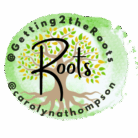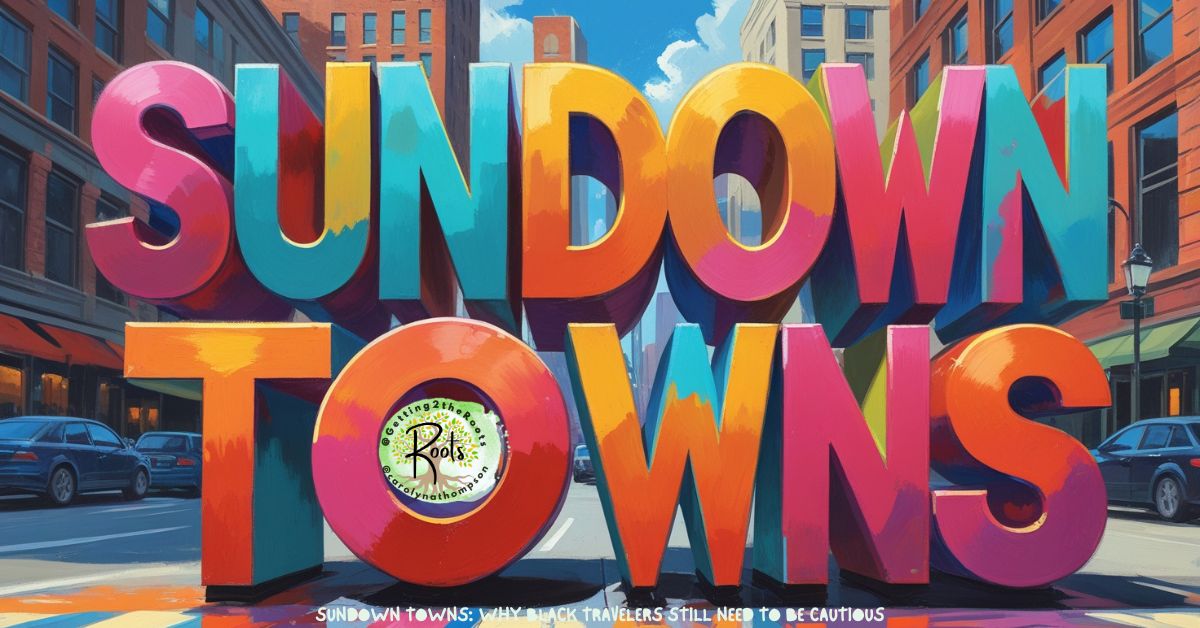Sundown Towns made every road trip a risk. Black travelers had to think about survival from the start. And these towns didn’t always have signs, but the message was clear. Don’t be there after dark. The fear was real, the danger high, and the warning often came too late.
What Were Sundown Towns
Sundown Towns earned their name because of one brutal rule:
- Black people had to leave by sundown.
- Some towns posted signs at the city limits.
Others didn’t need signs. Their reputation did the talking. Police, neighbors, store owners, and even kids helped enforce the rule. The goal wasn’t just to push Black people out. It was to make sure they never came back.
The message showed up in quiet ways. A cold stare. A store owner refusing to make eye contact. A cop pulling you over and asking why you were there. First, it might seem polite. The second warning wouldn’t be.
Some Black families made the mistake of trying to settle in these towns. They were met with burning crosses, vandalized homes, and threats to their lives. If they stayed, the threats often became reality.
Sundown Towns and Racial Exclusion
Sundown Towns operated on fear, not fairness. A Black family trying to move into one of these areas could face rejection at every turn. Real estate agents refused to show homes. Banks denied loans.
If someone did manage to move in, the harassment started fast. Notes on the door. Tires slashed. Slurs sprayed on walls. Sometimes it escalated to fires. Police didn’t help. Insurance didn’t pay.
It wasn’t just about homeownership. Black travelers trying to stop for gas, food, or rest could be refused service. Restaurants claimed they were closed.
Mechanics said they were booked. Hotels said no rooms were available. It didn’t matter if the place looked empty.
Even the businesses that did serve Black travelers often did so grudgingly. Some kept their restrooms locked or made Black customers enter through the back. Some made them wait until every white customer had been served.
Sundown Towns and Personal Stories
The danger wasn’t always loud. In Sundown Towns, exclusion came in quiet ways. People looked through you.
Conversations stopped when you walked in. You weren’t just ignored. You were erased. I’ve felt that many times.
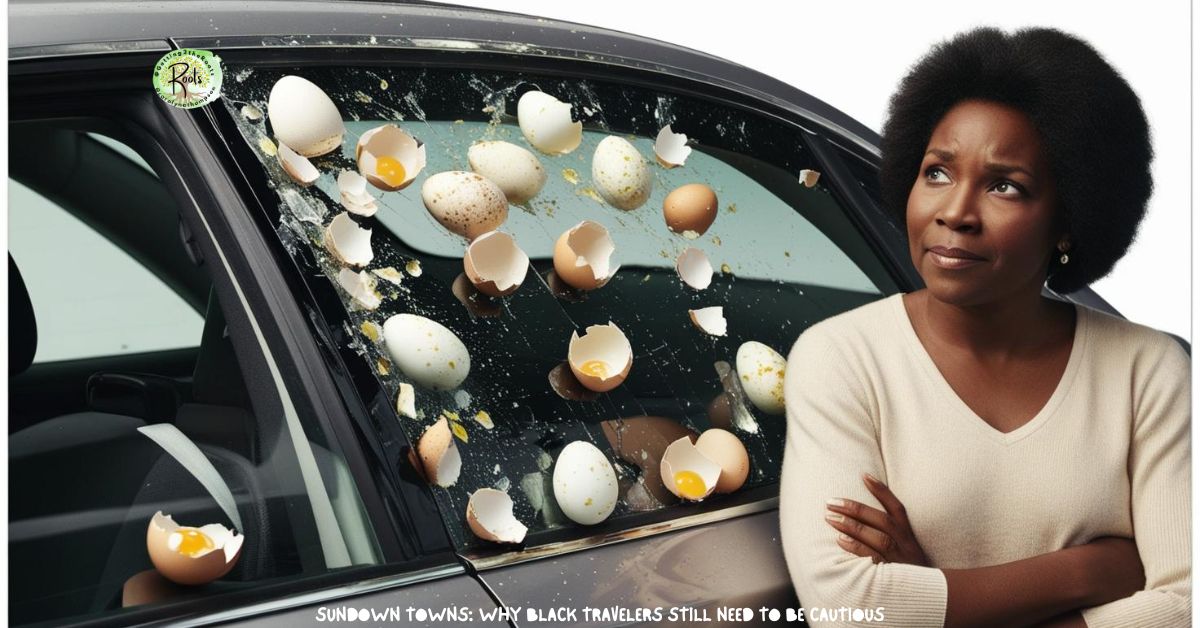
In the late 1970s, I took a class in Birmingham, Michigan. I felt it there. Every day, someone cracked raw eggs on my windshield. No one said anything, but the message was loud.
In the early 1980s, I got lost in Farmington Hills, Michigan. I stopped to ask for directions. People looked right through me. They acted like I didn’t exist.
In 2002, I felt it again. My sister, a friend, and I stopped at a small store-restaurant in Driver, Arkansas.
The stares started the second we walked in. I didn’t order food. They did. Their stomachs paid for it the next day.
Later, we stopped near land our family once lived on in the 1960s. A white woman pulled up immediately. Not only did She not ask if we needed help, But she didn’t even say hello.
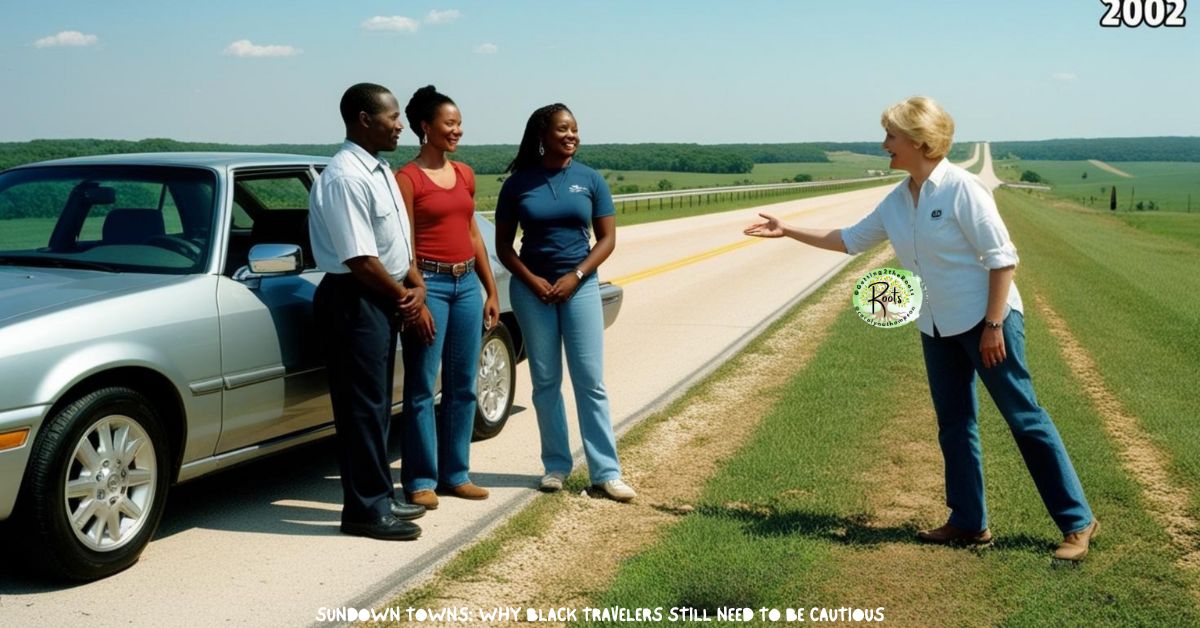
Also, she demanded to know what we were doing there and she wasn’t scared of us. She was confident that her question had weight. That’s what makes Sundown Towns so dangerous. The mindset is still there.
These experiences aren’t rare. I’ve heard stories from friends and strangers. Many share the same look in their eyes, that tired, familiar feeling of being unwanted, even in 2024.

Sundown Towns Were Everywhere
- Some Sundown Towns are well-known. Others stayed hidden but just as dangerous.
- Anna, Illinois, has long been rumored to stand for “Ain’t No Negroes Allowed.”
- Marion, Indiana, saw a lynching in 1930 that warned Black people to stay out.
Cicero, Illinois, had riots when a Black family tried to move in.
Darien, Connecticut, and Levittown, Pennsylvania, wrote racism into housing contracts.
Glendale, California, used racist laws and police intimidation to keep neighborhoods white.
Other towns like Columbus, Nebraska, and Parsons, Kansas, used threats to keep Black people out.
Elwood and Portland, Indiana, kept the Klan alive for decades. Pana, Illinois, attacked Black coal miners.
Monticello, Kentucky, and Vienna, Illinois, pushed out their Black communities as late as 1954.

Evanston, Wyoming, had no room for Black or Chinese residents. Minden, Nevada, sounded sirens to tell Black and Native people to get out by 6 PM.
Even if towns didn’t have sirens, they didn’t need them. Places like Benton, Arkansas, and Appleton, Wisconsin, relied on stares, silence, and discrimination. The outcome was the same.
Sundown Towns Left Lasting Damage
The effects of Sundown Towns still show up today. Many of those towns remain mostly white. That’s not a coincidence.
Black families were never allowed in or were pushed out. Businesses reflect this. School systems reflect this. The community makeup reflects this. The rules are still there, just harder to see.

Why the Green Book Was So Important
During segregation, Black families didn’t travel without a plan. Every stop had to be mapped out. A wrong turn could turn deadly. Running out of gas wasn’t just an inconvenience.
It could cost a life and that’s why The Negro Motorist Green Book was created. In 1936, Victor Hugo Green published it. It wasn’t just a guide. It was protection.
The green book listed hotels, gas stations, restaurants, and other places that served Black customers without problems. The Green Book covered the whole country. Not just the South.

By the 1940s, the Green Book was in high demand. Barbershops, churches, and even funeral homes stocked copies. By the 1950s, Black families used it as a lifeline.
Famous Black entertainers also depended on it while touring the country. Families relied on it like we rely on GPS today. They planned every meal, every gas stop, and every overnight stay.
There was no margin for error. Getting stranded in the wrong place could mean harassment, violence, or worse. The Green Book helped Black travelers stay safe in a dangerous country.
Even when the Civil Rights Act passed, many travelers still used the Green Book out of habit and fear.
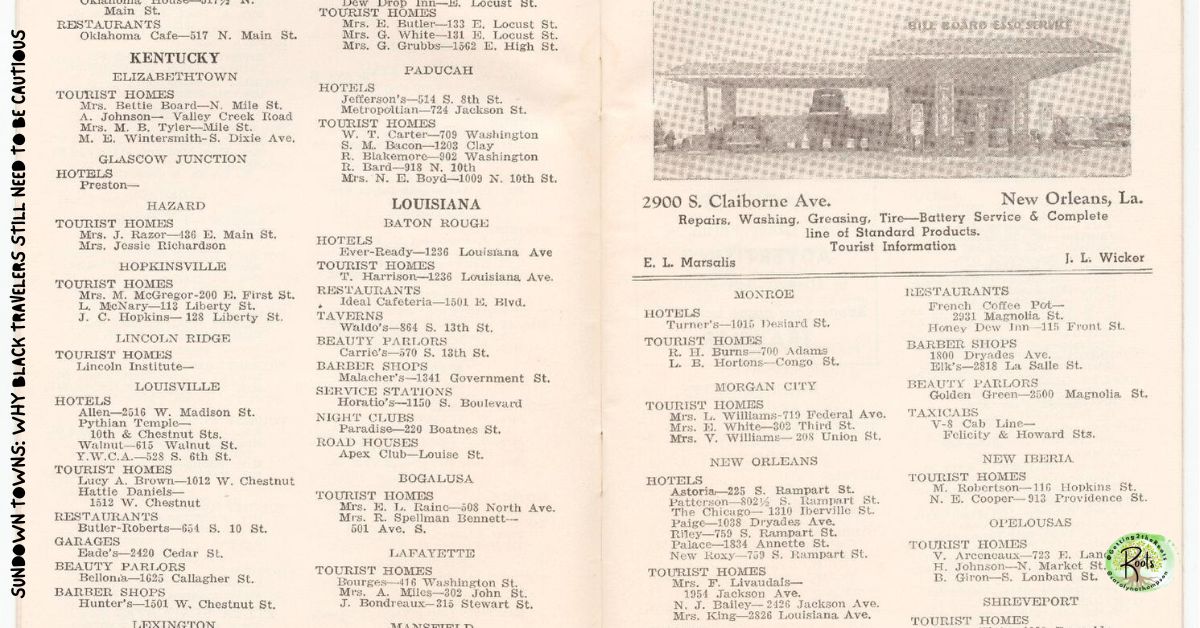
Sun Down Towns in the Modern Era
People think Sundown Towns are history. They’re not. The signs may be gone, but the attitudes remain. Some places still target Black drivers.
Police pull them over for “looking out of place.” Others use silence, refusal of service, and stares to say, “You don’t belong here.”
Some rural areas still feel dangerous. Some towns still refuse to welcome outsiders. These tactics don’t need laws. They don’t need signs. All they need is silence. Cold stares. Denied service. Fake smiles.
Many cities today pride themselves on being “welcoming” while maintaining the same economic barriers and policing that once defined a Sundown Town.

Existing While Black in Avondale
I experienced it in Avondale, Arizona, in the early 2000s. People constantly cut in front of me at stores and gas stations, both white and Hispanic individuals.
At first, I politely told them the line started behind me. But after it kept happening, I simply stepped back in front of them. If anyone said something, I’d calmly tell them, “You can cut in front of others, but not me.”
Once, while shopping in Walmart, a white woman hit me with her shopping basket, and I said, “Excuse you.” But she just ignored me and walked away.
I didn’t yell or make a scene. I simply tapped her back with my basket and kept moving, the only Black person in the store.
But let me be clear. I don’t recommend anyone do what I did. That day could have gone very differently. I could have lost my life. It’s not always about what you do. Sometimes it’s about how others choose to see you.
Being Black in a place where you’re already treated like you don’t belong means every action is watched, judged, and sometimes punished. Sundown Towns may not have signs anymore, but the risk is still very real.
Stay Safe, Stay Aware
Today that’s what Sundown Town behavior looks like today. It’s subtle, but you feel it. The coldness, the disrespect. the way people act like you’re invisible, or don’t belong.
Black travelers still need to be cautious. Sundown Towns haven’t disappeared. They’ve just gone quiet. The danger is still there.
Stay alert. Plan your route in advance. Know where you’re stopping for gas, food, and rest. Avoid stopping in unfamiliar, isolated areas after dark. Stick to well-lit, busy locations. Trust your instincts. If something feels off, leave.
If you’re stopped by police, stay calm. Be polite and record. But remember your rights. If you’re refused service, don’t argue. Walk away. Keep records if needed. But protect yourself first.

Some areas still use sirens or coded signals. Know the history of the places you visit. Some stories never made the news. But they live in the memories of the people who survived them.
Use today’s tools like online reviews, GPS apps, and community forums to spot potential red flags. Talk to others who have traveled the route. Trust word-of-mouth.
Sundown Towns didn’t just disappear. Their effects remain: In housing, in policing, in education. and in healthcare. They shaped how communities look and operate.
Some towns kept Black people out. Others made sure they didn’t come back. That’s why this history matters. We need to know it, and we need to say it, and we need to teach it. Because the next generation deserves better.

Why Sundown Towns Still Shapes Our Communities
Sundown Towns didn’t just shape travel. They shaped where families could live, where they could build wealth, and where they could feel safe.
These towns pushed generations of Black families into segregated cities, away from suburban schools, jobs, and opportunities.
Many of these same communities still have overwhelmingly white populations today. That’s not a coincidence.
That’s the result of exclusion that lasted for decades, sometimes enforced by law, sometimes by culture, but always by design.
When we ignore this history, we miss the reason why so many places still look the way they do. Policing patterns, school funding, health care access, and even voting laws have roots in the same systems that supported Sundown Towns.
Some people say, “That was a long time ago.” But the impact is still present; in property values, in economic gaps, in neighborhood segregation.
The old rules never fully died. They just evolved. Knowing this history helps us understand what we’re still fighting against today.
Explore More with History in Motion Playlist!
Ready to explore more? Visit the History in Motion category here: History in Motion.
Don’t forget to check out my YouTube channel for videos that bring these stories to life. Together, let’s educate, inspire, and celebrate the incredible legacy of history. Visit “History Truough Black Eyes” Playlist Today!

Conclusion
Sundown Towns were not just a chapter in history. They were a warning written into the landscape of America.
Their signs may be gone, but their message still echoes. That message made Black travelers cautious, made Black homeowners unwanted, and made Black communities invisible.
Today, those places may look different. But the silence, the suspicion, and the exclusion still linger. That’s why Black travelers still need to be cautious. That’s why this story still matters.
We share these stories not just to remember the pain, but to protect ourselves, honor our ancestors, and make sure the next generation can move freely without fear.
Because no one should have to ask, “Will I be safe here,” just for existing. And no one should ever be told, with words or silence, “You don’t belong here.”
Frequently Asked Questions About Sundown Towns
- What were Sundown Towns?
- Sundown Towns were places where Black people were not allowed after sunset. Some used signs, others relied on threats and violence.
- Do Sundown Towns still exist today?
- Many towns no longer post signs, but the unwelcoming mindset still exists in some places. Racial exclusion didn’t vanish; it changed form.
- How can I stay safe while traveling?
- Plan your route ahead. Stick to trusted stops. Avoid isolated areas at night. If a place feels wrong, keep going.
- Was the Green Book real?
- Yes. The Negro Motorist Green Book helped Black travelers find safe places to stop across the country from the 1930s to the 1960s.
- Are Sundown Towns only in the South?
- No. Sundown Towns were all over the United States, from California to Connecticut. Racial exclusion was nationwide.
